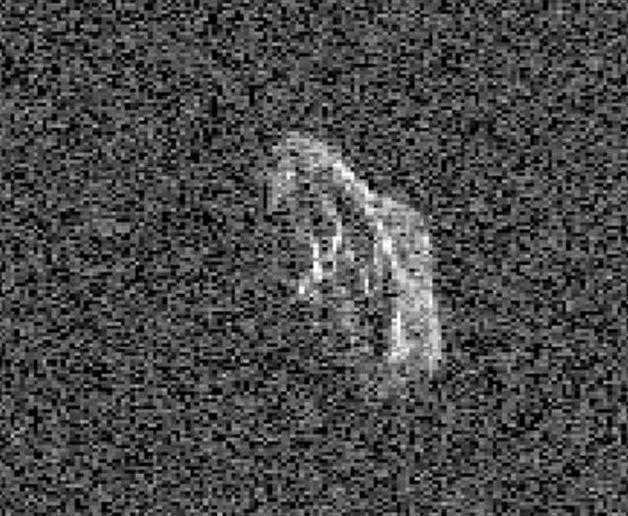While contemplating whether or not to resume translations on my main blog (the blog with my translations on IT topics can be found here), I recollected one of the most significant discussions on this blog, which centered around the translation of “The Dream of Interstellar Travel Is Fading” (original). This article sparked a lively conversation, with 209 comments from 87 individuals (excluding myself). The essence of the discussion revolved around the insurmountable technical and moral challenges of generational ships. Both the article and the comments prompted me to ponder what a non-photonic ship would be like for multi-year expeditions, even within our own solar system. It appeared to me that the most plausible examples would be the Lexx from the television series of the same name and the Rama from Arthur C. Clarke’s novel “A Date with Rama.” Now, I’ve decided to revisit this topic because I believe that a guided asteroid would be the most suitable framework for such a ship. Not long ago, the esteemed @ancotir shared a news article on Hubra about the successful trajectory alteration of the asteroid Dimorph using the DART ship. I consider this event to be a pivotal moment in our ability to manipulate asteroids, albeit on a small scale for now. This article will delve into the theoretical and promising advancements related to utilizing asteroids as spacecraft with integrated mineral reserves and anti-radiation protection.
Currently, it is still too early to seriously consider any interstellar expeditions, especially using a controlled asteroid as a means of transportation. However, the concept of taking an easily accessible asteroid out of its orbit and utilizing it for the benefit of civilization is gaining popularity. The ballistic properties of asteroids have been the focus of much research in the latter part of the 20th century, as scientists seek ways to prevent collisions between asteroids and Earth. The geological potential of asteroids is also being explored as a near-term technical possibility, particularly due to the high chemical purity of the metals found in asteroids and the scarcity of important minerals on Earth. The idea of using an asteroid as a space station or base near Mars shows promise, with Phobos being considered for such a role, as it is believed to be one of the asteroids that veered away from the main belt and got captured by Mars. By mastering the utilization of asteroids, we would be able to develop the necessary skills for long-term autonomous living in rocky environments, which could prove valuable in the construction of long-term settlements on Mars. Lastly, establishing habitations on asteroids is a unique project that would necessitate the development of artificial gravity and the extraction of fusion or water in an environment with extremely limited resources. These preliminary skills would indeed prepare us for interstellar travel, and it is possible that a domesticated asteroid equipped for long-distance travel would be used instead of a traditional rocket-like starship for such a purpose.
Petrochemical Make-up of Asteroids
When considering asteroids as a potential resource, it is essential to understand their unique mineral composition, structural characteristics, and distribution throughout the solar system.
Collectively, asteroids comprise approximately 3-3.6-10,21 kg of material, accounting for roughly 4% of the Moon’s total mass. If combined, these asteroids could potentially form a celestial body spanning approximately 1400 km in diameter. The majority of this mass is concentrated within Ceres, which boasts a diameter of around 900 km. Additionally, a significant number of rocky bodies can be found within the asteroid belt, located between Mars and Jupiter.
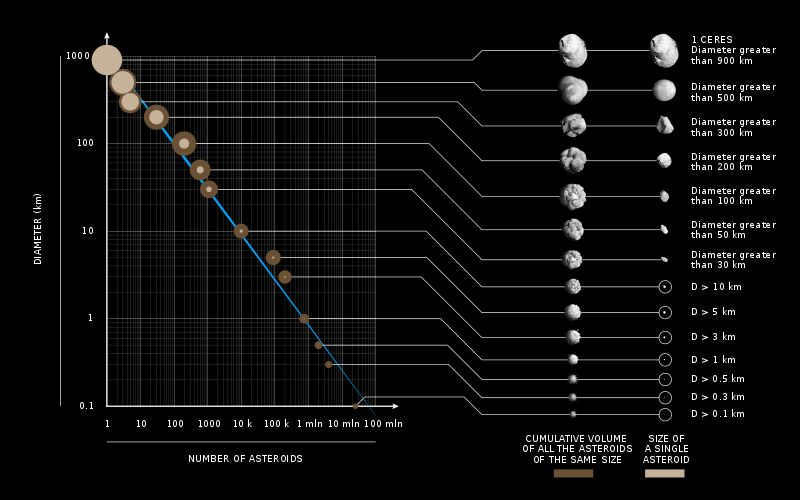
Whereas the majority of asteroids are concentrated in the region between Mars and Jupiter, the most intriguing ones are those that don’t belong to this belt but instead have orbits that intersect with Earth. The potential consequences of a collision with one of these asteroids could be catastrophic, making this small group (referred to as “atoms” by asteroid 2062 Aton) the most accessible for interception and exploration. In English literature, there is a term called “NEO” (Near Earth Objects) that encompasses all asteroids with a perihelion distance less than 1.3 astronomical units. A comprehensive catalog of these asteroids has yet to be compiled through telescope observations, but it is estimated that NEO includes approximately 1,000,000 space bodies with a diameter of over 100 m.
The asteroids were formed from the same gas-dust disk around the Sun as the inner planets of the solar system, making them generally similar in mineral composition to Earth. However, due to Earth’s much greater mass, its crust rocks have undergone stratification, resulting in the formation of a core and mantle in its deep interior, which has led to geological activity. In contrast, asteroids have not experienced this process and therefore have a more homogeneous and undifferentiated composition compared to Earth’s crust. From a geological exploration standpoint, this has both advantages and disadvantages. On the positive side, the composition of an asteroid can be confidently determined simply from its surface (without the need for drilling), as there is no regolith present. Additionally, all metals on an asteroid are evenly distributed since there hasn’t been any mixing caused by tectonic activity, which is common on Earth. A notable example of such mixing is the high concentration of rare earth elements in Fennoscandia, where lanthanides have accumulated in the ancient crust of the peninsula over billions of years due to their similar atomic weight and the periodic law. However, relatively recently (in geological terms), Scandinavia was subjected to glacial activity, which eroded sedimentary rocks and exposed older ones that are rich in lanthanides. On an asteroid, metals, including platinum, are much easier to extract compared to Earth, and they are not attracted to an iron core (as there is none) or dissolved in it. Therefore, rhenium and iridium would be better mined from asteroids. The main drawback, however, is that minerals on an asteroid are not concentrated in specific areas, so extracting a certain amount of metal would require digging through a much larger amount of rock compared to Earth. This is one of the arguments supporting the idea of mining an asteroid “from deep – outwards, in all directions” rather than through surface drilling.
When an asteroid grows to a diameter of 1 to 100 kilometers rather than just tens and hundreds of meters, it reaches a point where it develops its own gravitational pull, which enables it to retain rocks and regolith on its surface. These larger asteroids are characterized by their porous nature and can be likened to a conglomerate of loosely compacted rocks. Unlike their smaller counterparts, they do not possess any internal pressure or heat, which means that there are no molten or metamorphic rocks present. On the other hand, smaller asteroids take on a more uniform appearance, resembling solid blocks. Additionally, the centrifugal forces on these smaller bodies outweigh the gravitational forces (as evidenced by their rotation), so the asteroid can only maintain its structure if there is a secure internal bond between the rocks, such as a magnetic bond.
What advantages does an asteroid have over a traditional starship?
Given this initial information, the question arises: what would be the most logical course of action – to simply dismantle a small asteroid for its raw materials, or to attempt to transform a larger asteroid into a spacecraft (including for asteroid capture or towing) or a long-term space station? In 2017, a startup called Made in Space presented an ambitious proposal to NASA known as Project RAMA, outlining how to convert an asteroid into a vessel for interplanetary and even interstellar travel. The creators drew inspiration from ideas for such a project previously discussed by Sagan in his book, Blue Dot. The core concept of the project involves deploying a spacecraft to the asteroid, which would then deploy robots to excavate the mineral resources within the asteroid, extract potential fuel from the planetoid, create cavity nozzles, and under the guidance of the TsUP, direct the asteroid to a location where it can be systematically developed. This location could potentially be one of the Lagrangian points or a near-Earth orbit. This is how the process would unfold:
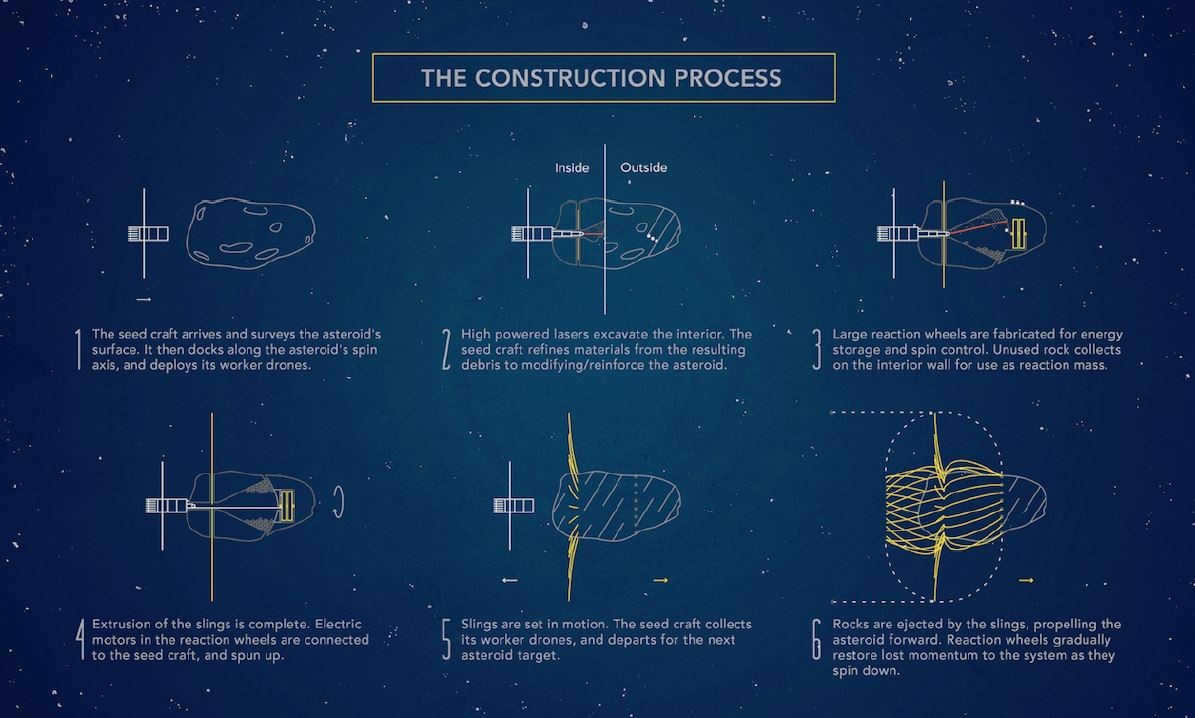
To identify the most promising asteroids, the company has created a software known as Rock Finder. This software generates a current database of all documented and analyzed asteroids near the sun, and enables us to specify our desired asteroid and time frame through a query in the program. Upon locating the desired asteroid, a compact vessel called a “planter” is dispatched to the asteroid. The planter is outfitted with necessary equipment and software to construct the robots, with the assembly process taking place directly on the asteroid.
Missions with human crews to asteroids and comets also appear to be fundamentally possible, but in order to turn them into a reality, intricate yet well-thought-out challenges need to be addressed. Let’s revisit the case of Phobos as an example, as its development can be seen as the next objective once permanent bases on Mars are established. As mentioned earlier, Phobos is a representative asteroid measuring 11.3 km in radius. It is precisely these types of celestial bodies that capture our interest, and Phobos has already been successfully transported to Mars and safely positioned in its orbit.
The potential living compartments on the developed asteroid would initially require the provision of radiation shielding, climate regulation, water generation, and oxygen synthesis. The production of oxygen has already undergone testing on the ISS, where it is efficiently generated by algae in a specialized bioreactor. Additionally, it would be essential to outfit the base with 3D printers, including those capable of producing food.
The establishment of artificial gravity is also a crucial objective. It is widely known that extended periods of weightlessness are detrimental to human health, resulting in muscle decay, bone density loss, and various other complications. It appears that the minimum level of gravity necessary for a person to withstand is approximately 38 percent of Earth’s gravity, a similar level to that experienced on the surface of Mars.
However, the issue of gravity is cleverly resolved on smaller asteroids: as previously noted, these blocks rotate and encounter centrifugal forces. Here is a representation of how the asteroid Eros rotates:
Consequently, to imitate the gravity that we are familiar with, all we would need to do is accelerate or decelerate the asteroid. In this scenario, the “up” direction would align with the axis of rotation, while the “down” direction would oppose it. For smaller asteroids, a greater amount of spinning would be necessary – making this technique most applicable to larger asteroids, like the one depicted in the main image of this article. In 2017, the University of Vienna released a study examining the signs of such rotation and the potential for controlling them. However, the authors admit the challenge of determining how to initiate the desired axis of rotation for the asteroid.
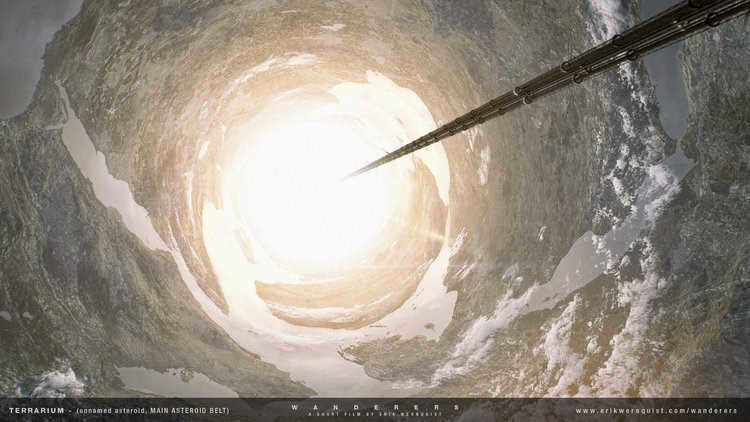
In order to shield the crew from radiation (and protect the instruments from solar wind), a layer of regolith measuring a minimum of 6 meters thick would be necessary. However, it might prove challenging to install artificial lighting within the inner cavity. A more practical solution would be to utilize a system of mirrors that could reflect sunlight into the living area. By controlling the positioning and rotation of these mirrors, it would be feasible to replicate the cycle of day and night. The asteroid would need to be perforated with three types of tunnels: light-bearing tunnels, transportation tunnels (for unloading mined ore onto spaceships), and passenger tunnels for the purpose of allowing shifts to enter and travel to work and living quarters, as well as transferring to docking transports.
It would be more practical to colonize the asteroid in stages, gradually developing each compartment, rather than attempting to settle the entire interior at once. To accomplish this, a tunneling shield could be used, similar to the construction of a subway line with multiple stations.
The projects known as DSTART and MELiSSA
aim to come up with innovative solutions to various challenges faced in space exploration.
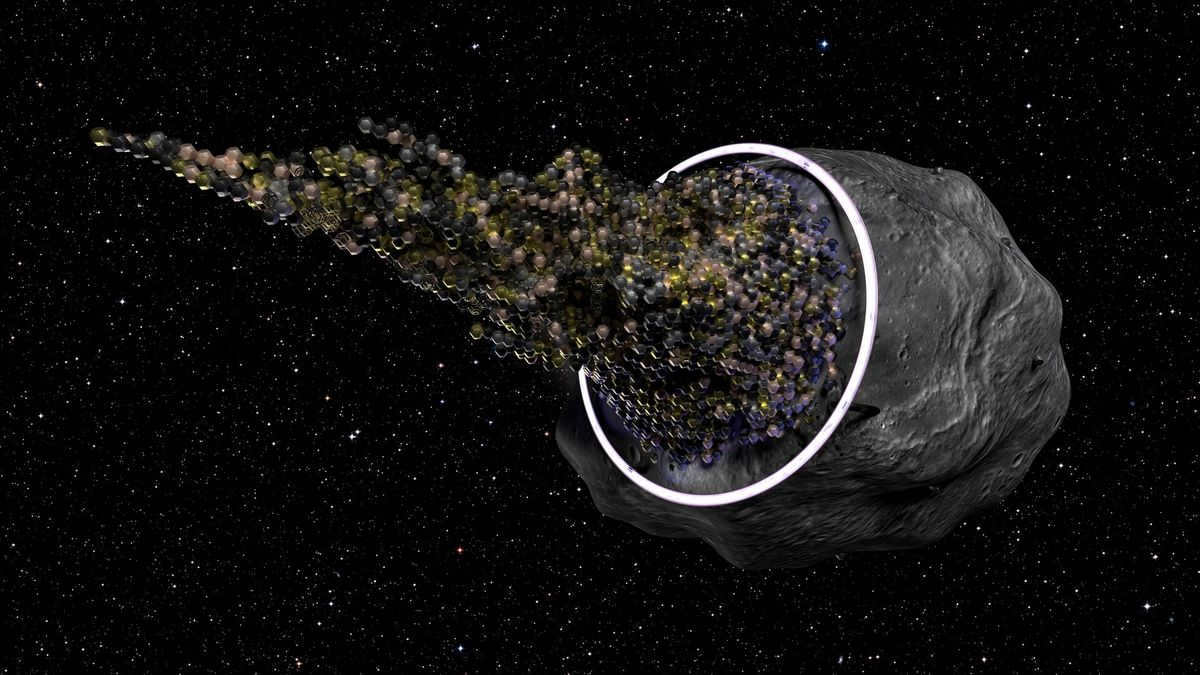
In 2018, a proposal was put forward by Angelo Vermeulen and his team from Delft University of Technology to the European Space Agency with the aim of transforming an asteroid into a starship. This innovative project, known as DSTART, envisions the asteroid serving as a long-term space station while also serving as a training ground for zero-waste production technologies, living quarters, and security system testing. To generate oxygen onboard the ship, the plan is to utilize an algae-based bioreactor, similar to the successful one currently in use on the International Space Station.
A pilot MELiSSA facility is currently operational at the Autonomous University of Barcelona, employing a hermetically sealed closed cycle system. This state-of-the-art complex utilizes a bioreactor that is powered by solar energy. Its primary function is to sustain uninterrupted production of water and oxygen through the use of algae. Notably, the facility has successfully supported the livelihood of test rats for extended periods of time, ensuring their continued activity and good health. Additionally, there are ongoing efforts to enhance the Barcelona facility by incorporating fully automated 3D printers, with the intention of exploring their potential in the creation of asteroid drilling tools.
Conclusion
Despite the incredible nature of the mentioned endeavors, asteroid astronautics holds just as much promise as lunar and Martian astronautics. Accessing nearby asteroids is relatively straightforward, even more so than reaching the Moon. However, these asteroids also pose a significant threat due to the potential for collisions with Earth. Merely destroying such an asteroid cluster in Earth’s orbit would result in the uncontrollable Kessler syndrome, rendering most ISVs useless. This is why the careful development of asteroids and their transportation to Lagrange points appears to be a logical next step, not just after lunar expeditions, but also after Martian expeditions. The moons of Mars, which are essentially asteroids, could serve as valuable testing grounds for such projects.

An asteroid is a relatively small celestial body composed of rock, similar to a planet, that can be found in the solar system. Numerous asteroids orbit the Sun, with the largest concentration of them residing in the asteroid belt, located between the orbits of Mars and Jupiter. Within this region lies the largest known asteroid, Ceres, which boasts dimensions of 970×940 kilometers, giving it an almost spherical shape. However, there are also asteroids that are so small that they can be compared to particles of dust. Asteroids, much like comets, are remnants of the material that formed our solar system billions of years ago.
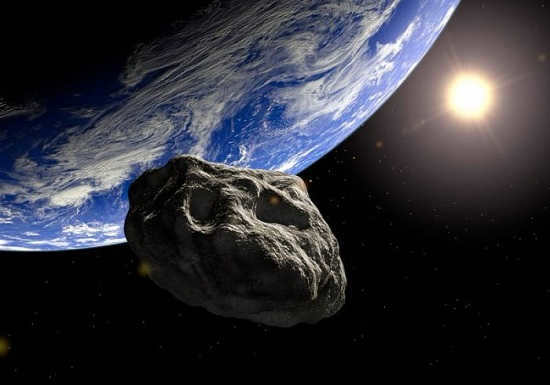
According to scientific calculations, there could be over 500,000 asteroids in our galaxy that measure more than 1.5 kilometers in diameter. Recent research has revealed that meteorites and asteroids share similar properties, suggesting that asteroids could potentially serve as the precursors to meteorites.
Exploring asteroids
Asteroid Features
Asteroids are categorized based on the spectrum of light they reflect: 75% of them belong to the dark charcoal class C, 15% are grayish-siliceous class S, and the remaining 10% consist of metallic class M and a few other uncommon types.
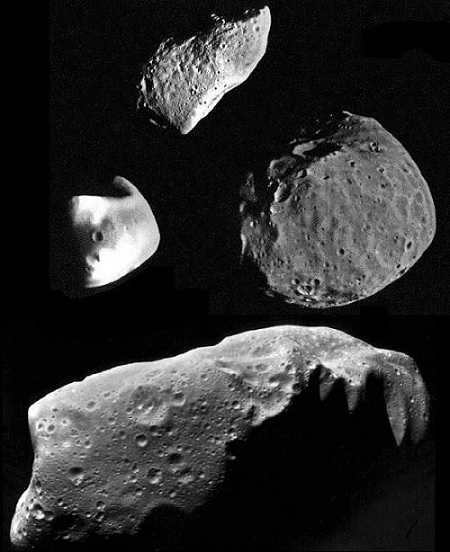
Confirmation of the irregular shape of asteroids can also be seen in the fact that their brightness decreases significantly as the phase angle increases. Due to their small size and vast distance from Earth, obtaining more precise data on asteroids is quite challenging. The weak gravitational force acting on asteroids is insufficient to give them the spherical shape commonly found in planets. Instead, this gravitational force allows fragmented asteroids to exist as separate blocks that remain in close proximity without colliding. Consequently, only the larger asteroids that have managed to avoid collisions with medium-sized bodies are able to maintain the spherical shape acquired during planetary formation.
Navigation
Posts
One of the biggest obstacles to overcome in any human mission to Mars is ensuring the successful and secure landing of astronauts on the planet’s surface.
The existence of extraterrestrial life or even entire alien civilizations continues to be a topic of fascination for scientists, philosophers, and the general public. Numerous films and books have been dedicated to exploring this question.
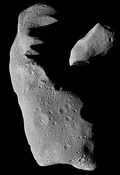
Asteroids (derived from the Greek word ἀστεροειδής, meaning “star-like”) are celestial bodies that orbit the Sun in elliptical paths and are characterized by their small size, distinguishing them from the larger planets. The first asteroid, named Ceres, was discovered by G. Piazzi at the observatory in Palermo, Sicily on January 1, 1801. It was named after the ancient Roman goddess of fertility and patroness of Sicily (Fig. 1). Subsequently, other asteroids such as Pallada (1802), Juno (1804), and Vesta (1807) were discovered. Ceres, with a diameter of 939.4 km, Pallada with 513 km, and Vesta with 525.4 km, are the largest asteroids in the Solar System (Table 1). Most asteroids exhibit direct motion and have orbits with slight inclinations to the ecliptic plane, although there are some asteroids with significant orbital inclinations.
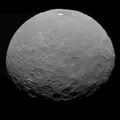
Table 1. Statistics on several asteroids
Primary semi-axis of the orbit, a. e.
Revolution period, years
Origin
It is believed that asteroids were formed through the gradual fragmentation of a limited number (up to a few dozen) of larger primary bodies during the development of protoplanetary matter alongside the formation of the major planets. In the present era, with the vast quantity of asteroids present, the likelihood of their collisions is relatively high. Collisions involving large asteroids measuring over 1 km in size can occur approximately once every few million years. These collisions give rise to new asteroids, meteoric bodies, and cosmic dust. Moreover, irregularly shaped asteroids can undergo spontaneous destruction: the cyclic heating and cooling, as well as the influence of tidal forces exerted by the major planets, can weaken the internal structure of the asteroid, and if it reaches a certain rotation speed, the centrifugal forces can cause it to break apart into multiple fragments.
Based on contemporary cosmogonic hypotheses and observational evidence, it is indicated that the orbit of Jupiter serves as a demarcation point beyond which asteroids are unable to form. Asteroids situated beyond Jupiter’s orbit could potentially exist due to alterations in their original orbits caused by the gravitational influence of larger planets. Additionally, these asteroids may also be remnants of a parent body that was destroyed as a result of a catastrophic event, such as a collision with another celestial body. In certain cases, these asteroids can possess highly elongated orbits, extending all the way to the aphelion of Uranus, Neptune, and even Pluto.
Classification
Asteroids are categorized into various classes based on their composition.
- C-class asteroids are composed of carbon, iron, and other chemical compounds, giving them a rocky meteorite-like appearance. These asteroids have a low albedo ranging from 0.03 to 0.1, indicating a very dark surface. Approximately 75% of all known asteroids belong to this category.
- S-class asteroids have a surface made up of iron-nickel material, along with iron silicates and magnesium silicates. Compared to C-class asteroids, they are lighter in color and have an albedo of around 0.1 to 0.22. This class comprises about 17% of all known asteroids in the solar system.
- M-class asteroids are made up of pure nickel iron and have an albedo ranging from 0.1 to 0.18. They are similar to S-class asteroids and make up the majority of the remaining asteroids in the Solar System that are not classified as belonging to the previous two classes.
Aside from these three main classes, there are also numerous subclasses and other types, depending on the classification system being used. The Tholen classification system and the SMASS classification system are the two most commonly used systems. Spectral methods, particularly spectrophotometry, are used to obtain the reflectance spectra of most asteroids.
Based on their physical characteristics, asteroids are divided into several groups, each of which contains objects with similar surface properties. The size of most asteroids is determined indirectly, using their brightness and assuming a certain albedo value. Typically, the brightness value is adjusted to standard conditions of illumination and observation, resulting in the absolute magnitude of the asteroids. The size and shape of some asteroids, particularly those that pass close to Earth, have been determined using radar astronomy. Additionally, interplanetary stations have captured photographs of some asteroids.
Table 2. Correspondence between asteroid classes, mineral composition of their meteoritic counterparts, surface reflectance, and location in the Solar System
Summary description / location
Mineral composition (meteoritic analogs)
The mineral composition of meteoritic analogs is very dark and the spectrum does not have any distinct features. It essentially repeats the spectrum of the sun.
These analogs contain organic compounds and anhydrous silicates.
They have a dark and reddish appearance, and their albedo increases significantly with wavelength. There is a possibility of an absorption band around 2.2 μm. These meteoritic analogs are typically found in the outer part of the Main Asteroid Belt.
They also contain kerogen-like organic matter and anhydrous silicates.
These analogs have a flat, reddened spectrum with weak absorption in the ultraviolet (UV) region. There may be an absorption band around 3 μm due to hydrated silicates.
They belong to the C-subclass and have weak absorption in the UV region. There may also be an absorption band around 3 μm.
These analogs contain hydrated silicates and are typically found in carbonaceous chondrites.
They also belong to the C-subclass and have weak to vanishing absorption in the UV region. There may be an absorption band around 3 μm.
These analogs contain hydrated silicates and phyllosilicates, and are typically found in carbonaceous chondrites.
Broad absorption band in the UV-visible range; a flat spectrum is observed in the near-infrared range
The spectrum exhibits an S-like shape in the visible range; there is a weak absorption band near 1 μm; the spectrum remains flat from 1.1 to 2.5 μm. Belongs to the Eos family
The spectrum is featureless with a gradual increase towards the red end; it is similar to the E and P classes; there is some variation in the near-infrared range; high radar albedo
There is a strong absorption on both sides of 0.7 μm, particularly in the UV region; there is a pronounced absorption (olivine, pyroxene) near 1 μm; there is no increase towards the red end of the spectrum; belongs to a rare grade
There is a strong absorption in the UV region around 1 micron (olivine); there is no absorption band around 2 microns; belongs to a rare class
There is a strong absorption in the UV region and at 0.7 μm; there are absorption bands near 1 μm and 2 μm; there is a weak feature near 1.5 μm; belongs to a rare grade
There is a strong absorption in the ultraviolet (UV) region and at a wavelength of 0.7 μm. Additionally, there are absorption bands observed at around 1 μm and 2 μm. These absorption bands extend towards the red end of the spectrum. This class of asteroids is considered rare.
The composition of these asteroids typically includes pyroxene, olivine, and either metal or no metal.
These asteroids have the highest albedo, which means they reflect a large amount of light. Their spectra do not exhibit any distinct features and extend towards the red end of the spectrum. They are similar to classes P and M but exhibit weak changes in the near-infrared (IR) region. These asteroids are typically found in the inner part of the Main Asteroid Belt.
Astroid Clans
There are multiple asteroid families in existence. The largest among them is known as the Main Asteroid Belt, which consists of asteroids with orbits that fall between those of Mars and Jupiter. The total mass of all the asteroids in the Main Belt is approximately one thousand times less than the mass of Earth. The Main Asteroid Belt is divided by Kirkwood gaps, which are regions where asteroids with specific large semi-major axes of orbits can be found. The presence of these regions is determined by orbital resonances, which are certain ratios between the major semi-axes of the orbits of a smaller celestial body and a larger one, such as Jupiter. Several other asteroid belts have also been discovered within Jupiter’s orbit. Furthermore, asteroid families have been identified near the libration points of planets situated near the orbit of a larger planet, symmetrically both ahead of and behind it. There are two groups of such asteroids near Jupiter known as Trojans (sometimes Trojans consist of a group of asteroids moving ahead of Jupiter, while the Greeks follow it), as well as a group of libration asteroids close to Mars.
Particular attention should be given to the cluster of asteroids that are in close proximity to Earth, as they pose a significant threat as potential sources of asteroids and comets. These asteroids have perihelion distances, which refers to the distance from the Sun to the point in their orbit that is closest to the Sun, that are less than or equal to 1.3 astronomical units (a.u). Astronomers consistently track and identify asteroids that come close to Earth’s orbit. These asteroids can be classified into four distinct families. The first three families consist of asteroids that extend beyond Earth’s orbit in their aphelion, which is the point in their orbit that is farthest from the Sun. These families are named after prominent members: Cupid, Apollo, and Aton. The fourth family, known as the Atira family or the X family, is made up of asteroids whose entire orbit is within Earth's orbit.
There are different asteroid families, including the Centaur family, which consists of asteroids that have orbits between Jupiter and Neptune. These asteroids have a unique characteristic as they display both asteroid and comet properties due to their dual nature.
Nomenclature
Initially, a guideline was established to designate asteroids using the appellations of ancient goddesses from Greek and Roman mythology. As the inventory of goddess names became depleted, asteroids started to be designated after other mythological figures, as well as through the use of arbitrary names. Since 1923, these names have been sanctioned by a dedicated committee within the International Astronomical Union (IAU) and recorded in official catalogs. Subsequently, asteroids were solely named once their orbital paths were well-determined.
The International Minor Planet Center (MPC) serves as the official representative of the IAU, receiving and processing all observations related to asteroids. At the MPC, precise calculations and refinements are made to determine the orbits of these celestial objects. Subsequently, the names of the asteroids are officially approved during the next IAU meeting. Furthermore, if an asteroid has a clearly defined orbit, the MPC assigns it a unique serial number, thus classifying it as a numbered planet. The MRS catalog currently contains nearly a million known asteroids with established orbits, and this number continues to expand. Notably, the catalog also includes various objects of different natures, such as those originating from the Kuiper belt, objects displaying dual characteristics as both comets and asteroids, and objects that can be classified as meteorites based on their size. Collectively, these entities, including asteroids, comets, and other objects, are referred to as small bodies within the Solar System according to the MPC catalog. Presently, the assignment of a proper name to an asteroid, such as one honoring a notable individual, city, or country, requires the consent of the discoverer and approval by a dedicated commission within the IAU.
Exploration of outer space

Figure 2. An artistic representation of the Galileo spacecraft. Fig. 2. The Galileo spacecraft depicted in an artistic manner. Several spacecraft have been sent or are scheduled to be sent into space to investigate asteroids. These missions can either involve flybys, where the spacecraft passes by the asteroid without landing, or they can include physical contact with the asteroid’s surface and even the collection of soil samples from beneath the surface layer. Below are some details about space missions focused on exploring asteroids.

Figure 3. An artistic interpretation of the Clementine spacecraft. Fig. 3. A visual representation of the spacecraft Clementine. The Clementine spacecraft, operated by NASA, was launched on January 25, 1994. Its primary objective was to map the surface of the Moon, but it was also intended to conduct scientific observations of the near-Earth asteroid Geographos (1620 Geographos) in order to gain insights into its physical properties and surface characteristics. However, in May 1994, after successfully completing the lunar mapping mission and departing the Moon’s orbit, one of the spacecraft’s onboard computers experienced a malfunction, resulting in engine failure and the depletion of all fuel reserves. As a result, it was not possible to proceed with the planned journey to Geographos. Nevertheless, the spacecraft remained in space, allowing scientists to study how its various components would fare in the challenging space environment.

Illustration 4. NEAR-Shoemaker spacecraft (artistic depiction). The NEAR-Shoemaker spacecraft (Fig. 4) was launched by NASA on February 17, 1996. It carried out the initial long-term close-up examination of an asteroid, investigating the mass, structure, geology, composition, and gravity of the near-Earth asteroid Eros. On June 27, 1997, it passed extremely close to the asteroid Matilda, reaching within 12 km of its surface. On February 14, 2000, the spacecraft entered into orbit around its main objective, Eros, and landed on the asteroid’s surface in February 2001, transmitting detailed images as it descended.
The launch of the Cassini-Huygens mission to Saturn and its moons took place on October 15, 1997. As it made its way towards its destination, the spacecraft passed through the Main Asteroid Belt and on January 23, 2000, it had the opportunity to observe and capture images of the asteroid Masursky (2685 Masursky), allowing scientists to make an estimate of its size.
Artistic representation of the Deep Space 1 spacecraft can be seen in Figure 5. The spacecraft, launched by NASA on October 24, 1998, had the purpose of testing advanced technologies in space. It achieved a significant milestone on July 29, 1999, when it flew past the asteroid Braille, coming as close as 26 km to its surface. This close encounter allowed for a multitude of observations that contributed to our understanding of asteroids. The mission was extended to include a successful flyby of Comet Borrelli in September 2001, which provided unexpected images and data that were not originally part of the program’s objectives. The entire mission was concluded on December 18, 2001.
Artistic representation of the Stardust spacecraft, also known as “Stardust” (Figure 6), which was launched by NASA on February 7, 1999. On November 2, 2002, the spacecraft flew past the asteroid Annefrank (5535 Annefrank) as it made its way to its main target, Comet Wilda 2, which it encountered in January 2004. The mission of Stardust was groundbreaking, as it marked the first time that samples from a small celestial body were successfully returned to Earth. These samples were delivered in a capsule in 2006. The flyby of the asteroid Annefrank served as a test for the Stardust spacecraft’s systems and capabilities in preparation for its rendezvous with comet Wilde 2. Surprisingly, the images captured during the flyby revealed a smaller and more heavily cratered rocky body than expected, with a darker appearance. This unexpected data added to the mission’s scientific value. Due to the success of the Stardust space mission, it was extended and renamed Stardust-Next. The spacecraft was then directed to intercept and capture images of comet Tempel 1, which it accomplished successfully in early 2011.

Figure 7. An artistic representation of the Hayabusa spacecraft. The Hayabusa spacecraft was sent into space on May 9, 2003, by the Japan Aerospace Exploration Agency (JAXA). It was directed towards the asteroid Itokawa and successfully reached it on September 12, 2005, where it conducted a study of the asteroid’s physical properties (Figure 7). In November 2005, the spacecraft made a landing on the asteroid and stayed there until April 2007. It then made its journey back to Earth, finally returning in June 2010 carrying samples from the asteroid’s surface.
The Deep Impact spacecraft (NASA) was launched on January 12, 2005, with the aim of investigating the composition of comet Tempel 1 (Figure 8). Its mission was successfully completed in July 2005 when it collided with the comet’s nucleus using a specialized impactor, resulting in the formation of a cloud of debris. Figure 8 displays an artistic representation of the Deep Impact spacecraft. This event marked the first-ever impact on a small celestial body within the solar system. Following this achievement, the Deep Impact spacecraft was repurposed in 2007 and given the name EPOXI to study other comets, asteroids, and exoplanets. In 2011, the EPOXI spacecraft was directed towards the asteroid 2002 GT. Unfortunately, contact with the spacecraft was lost before it could reach the asteroid, leading to the termination of the mission in September 2013.
The journey of the European Space Agency’s (ESA) Rosetta spacecraft began on March 2, 2004, when it was launched towards the comet Churyumov-Gerasimenko. During its 10-year voyage, Rosetta made significant discoveries by circling the asteroids Steins in September 2008 and Lutetia in July 2010. Figure 9 shows a visual representation of Rosetta orbiting the spacecraft and the Philae landing probe over the Churyumov-Gerasimenko comet. The spacecraft closely tracked Steins as it approached and identified it as a diamond-shaped object with numerous craters and impact marks. It is now believed that Steins was once part of a larger celestial body that fragmented due to collisions with other objects. Rosetta’s flyby of Lutetia on July 10, 2010, provided valuable insights into the asteroid’s complex history, including its mass, volume, density, composition, age, and surface appearance. On August 6, 2014, the Rosetta spacecraft successfully reached its primary target, Comet Churyumov-Gerasimenko. It entered orbit around the comet to conduct surface mapping before deploying the Philae lander to its nucleus in November 2014 (Figure 9). The mission continued as the Rosetta lander closely observed the comet during its perihelion in August 2015, tracking changes in its behavior as it moved closer and then farther away from the Sun. The mission concluded in 2016.
Figure 10. An artistic rendering of the Dawn spacecraft. The Dawn spacecraft, which was launched by NASA on September 27, 2007, was specifically designed to investigate Vesta and Ceres, the two largest intact protoplanets since their formation (Figure 10). From July 2011 to September 2012, the spacecraft orbited around Vesta, capturing numerous images and conducting measurements, leading to initial insights regarding the composition, topography, and geological morphology of this rocky celestial body. Subsequently, it proceeded towards its second target, Ceres, and arrived there in the spring of 2015.
Artistic representation of the Chang’E 2 spacecraft can be seen in Figure 11. This spacecraft was launched on October 1, 2010, and it successfully entered lunar orbit to explore the surface. The main purpose of this mission was to prepare for the Chang’E 3 spacecraft program, which later landed on the Moon in December 2013. Once the lunar exploration phase was completed, Chang’E 2 continued its journey towards the Lagrange point L2, where it arrived in August 2011. In April 2012, the spacecraft was redirected towards the asteroid Tutatis, where it carried out an extended exploration program. The mission finally concluded in December 2012 as Chang’E 2 completed its orbit around the asteroid.

Figure 12 shows an artwork of the Hayabusa-2 spacecraft. This space program, launched in 2014, is a continuation of the previous JAXA mission and aims to explore asteroids and bring back samples to Earth. The spacecraft’s target is the small asteroid Ryugu (1999 JU3), which it reached in 2018. After studying the asteroid for 1.5 years, Hayabusa-2 sent a descent vehicle to collect samples from its surface. These samples were successfully delivered to Earth in late 2020.
Figure 13: Artistic representation of the OSIRIS-REx spacecraft. Fig. 13. Artistic image of the OSIRIS-REx spacecraft. The OSIRIS-REx spacecraft, launched by NASA in the autumn of 2016 (Figure 13), is on a mission to study the orbital characteristics and surface features of asteroid Bennu , which it reached in 2018. OSIRIS-REx has also gathered samples from the asteroid’s surface and is expected to bring them back to Earth.
Asteroids are small, solid bodies without an atmosphere that orbit the Sun in separate paths. They are too small (typically no more than a few hundred kilometers in size) to be classified as planets, but still large enough to be considered more than just cosmic dust or meteors.
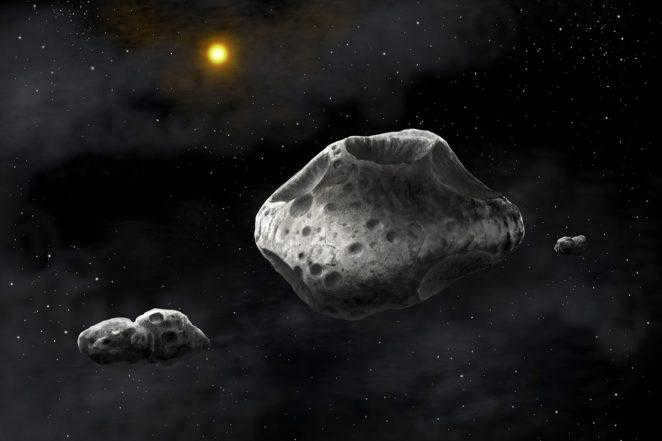
The main difference between large comets and asteroids lies in their orbit and composition. Comets have a slightly elliptical orbit, while asteroids have a more solid and stable orbit. In terms of composition, comets are made up of a mixture of frozen water and dust, with some dust particles mixed in. On the other hand, asteroids are primarily solid.
Classifying a celestial body as an asteroid can sometimes be arbitrary and based on tradition. For instance, there is ongoing debate about whether Pluto should be classified as an asteroid or a planet. Additionally, there are cases where recently discovered and powerful asteroids in remote regions are sometimes referred to as additional planets within the solar system.
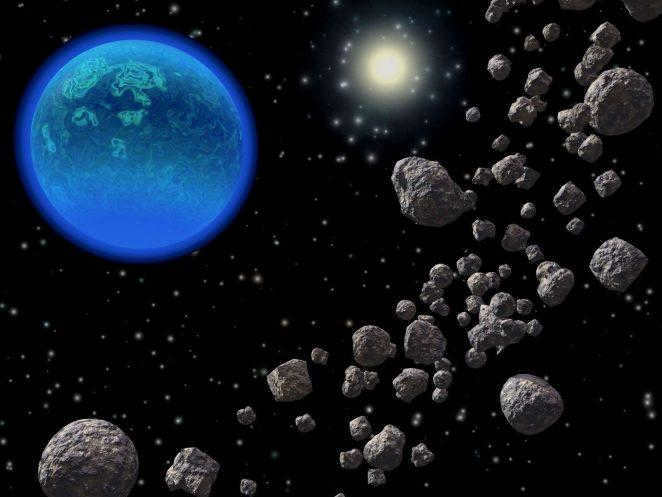
After an extensive search for a missing planet in the region between Mars and Jupiter, astronomers discovered the first asteroid in 1801. This asteroid, named Ceres, has a diameter of approximately 1000 km. Subsequent searches led to the identification of numerous smaller bodies, and more recently, advancements in photographic methods have greatly expanded our knowledge of asteroids in the solar system.
As of now, there have been over 305,224 recorded asteroids in orbit, with 120,437 of them assigned numbers and 12,779 given names. The majority of these asteroids are located between the orbits of Mars and Jupiter, at distances ranging from approximately 2 to 4 astronomical units (a.u.), equivalent to 300 to 600 million kilometers.
This area is known as the primary asteroid belt. The majority of asteroids have a slightly elliptical orbit, similar to the Earth and other planets, as they orbit around the Sun.
On average, an asteroid completes its orbit around the Sun in three to six years.
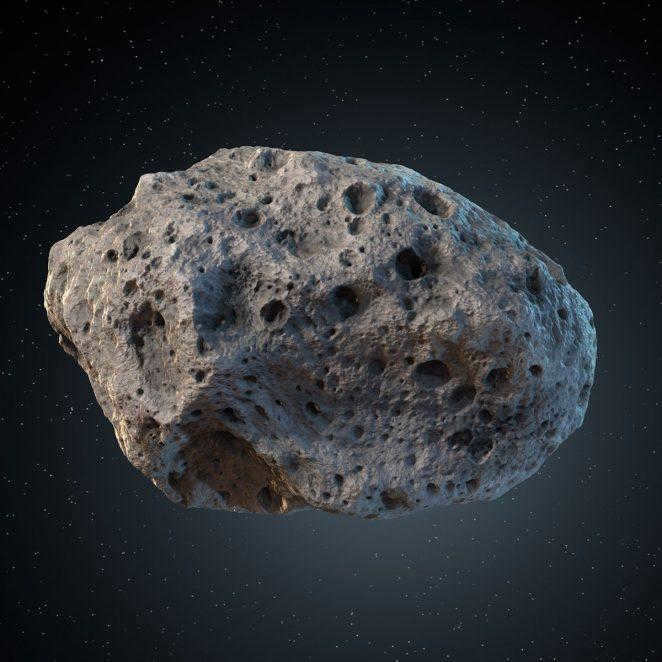
Asteroids are remnants of ancient material that formed the solar system around 4.5 billion years ago and were unable to come together to form a larger celestial body, primarily due to the strong gravitational influence of Jupiter.
Furthermore, there is a theory suggesting that some of the known asteroids are the result of collisions between larger celestial bodies. This hypothesis is supported by the fact that asteroids exhibit variations in their composition, which can be attributed to the different layers of materials that make up the original larger body. Following the breakup, some fragments formed from the core (iron asteroids) while others originated from the crust (silicon asteroids).
Despite the vast quantity of asteroids present in our solar system, their overall mass is not particularly significant. It has been estimated that if all of this material were to be compressed into a single body, it would form a sphere with a diameter of approximately 1500 kilometers. This size is actually smaller than half of our Moon’s diameter. Out of the numerous asteroids, only sixteen have diameters exceeding 240 km, while the smallest ones can be likened to boulders in terms of their size.
Our understanding of most asteroids primarily comes from observations made here on Earth. Through these observations, we are able to gather reliable data regarding their orbits. Additionally, we can make somewhat imprecise determinations regarding their size, rotation, and surface characteristics. This information then allows us to classify each asteroid into a specific type.
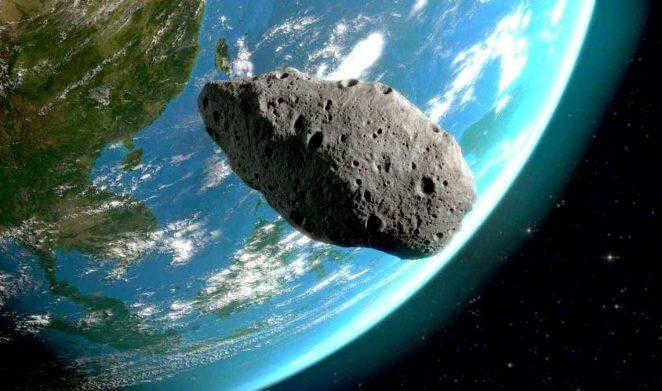
Asteroids are primarily observed visually from Earth, but there have been a handful of successful endeavors to investigate asteroids through radar sounding (e.g., asteroid (4179) Toutatis). An even more effective approach is the utilization of astronomical observatories positioned in orbit around the Earth.
The thorough examination of asteroids has become feasible with the deployment of spacecraft that have come within close proximity to them. The initial data was obtained from probes that flew by an asteroid while en route to another destination, and in recent times, space instruments have been launched with the sole objective of studying asteroids.
Composition and Structure of Asteroids
Scientists can determine the composition of asteroids by analyzing certain meteorites in the laboratory, as these meteorites are believed to have the same origin as asteroids. Based on their physical and chemical properties, the majority of asteroids can be classified into three categories:
Type C (carbon) – This category comprises more than 75% of all known asteroids. These asteroids have a very low albedo (the ratio of reflected light to incident light), ranging from 0.03 to 0.09. They are predominantly composed of materials similar to the Sun, but with a depletion of lighter elements such as hydrogen and helium. Type C asteroids are primarily found in the outer regions of the main asteroid belt.
Silicon Type S – accounts for approximately 17% of the known asteroids. Its albedo falls within the range of 0.10 to 0.22. This type primarily consists of a mixture of iron and magnesium sulfides with some iron content. It is predominantly found in the inner regions of the main belt.
Iron Type M – Represents a residual fraction of the known asteroids, making up about 8%. The albedo of this type varies from 0.10 to 0.18. It is composed almost entirely of iron. M-type asteroids are typically located in the central areas of the main belt.
As previously mentioned, most of the identified asteroids are located in the primary belt situated between the paths of Mars and Jupiter. Nevertheless, numerous asteroids have also been discovered outside of this region. Certain asteroids traverse areas near the outer planets, such as Jupiter and Mars, while others have orbits that extend far beyond Jupiter’s path. Even Pluto is classified by certain astronomers as one of the notable members of the group of asteroids that travel along the outermost reaches of the solar system, known as trans-Neptunian asteroids.
Categories of asteroids
When observed from Earth, asteroids that are part of the main belt and have a perihelion less than 1.3 AU (astronomical units) are considered to be approaching Earth. These near-Earth asteroids (NEAs) are particularly significant.
Amur type – These asteroids intersect the orbit of Mars but do not come close to Earth’s orbit at the nearest point to the Sun.
Apollo type – These asteroids intersect Earth’s orbit.
Aton type – These asteroids intersect Earth’s orbit and possess certain characteristics.
It is widely acknowledged that the eradication of a significant portion of Earth’s biodiversity, including the colossal dinosaurs 65 million years ago, can be attributed to the collision of an asteroid or comet measuring approximately 10 km in diameter. As a result, the examination of asteroids serves a practical purpose. Familiarizing ourselves with the structure, composition, and other physical attributes of an asteroid can aid in determining the most suitable approach to averting a potential catastrophic collision with our planet.
In contrast to the detrimental aftermath of an asteroid impact on Earth, there exist intriguing and optimistic hypotheses regarding “beneficial” asteroids and comets that may carry the building blocks of life across the cosmos.
Asteroids are celestial bodies that do not orbit planets and do not have enough mass to become spherical like a dwarf or regular planet due to their own gravitational force.
When studying any of these objects, one of the initial goals is to determine the composition of an asteroid, as its unique makeup provides insight into the origins of the object, which is ultimately connected to the history of the entire solar system. Additionally, there is practical interest in assessing the potential usefulness of asteroids for future resource extraction.
Discovering the Composition of Asteroids: Unveiling Their Chemistry and Mineralogy
Unveiling the chemistry and mineralogy of asteroids is a complex task that can be accomplished through a diverse range of direct and indirect investigative methods. These methods provide valuable insights into the composition of asteroids, albeit with varying degrees of accuracy:
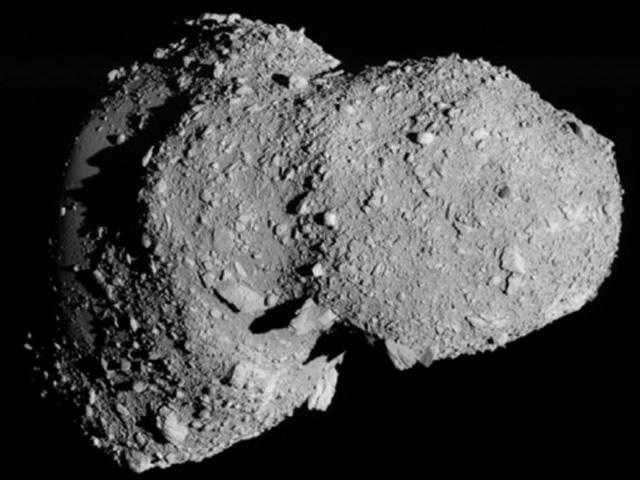
Types of asteroids
Asteroids are classified into three main types based on their composition:
- Type C – Carbonaceous. This group comprises the majority of known asteroids – 75%.
- Type S – Silicate or rocky. Approximately 17% of discovered asteroids fall into this category.
- Type M – Metallic, composed of iron and nickel.
These three main categories encompass asteroids of various spectral classes. Additionally, there are several rare asteroid groups that exhibit distinct spectral characteristics.
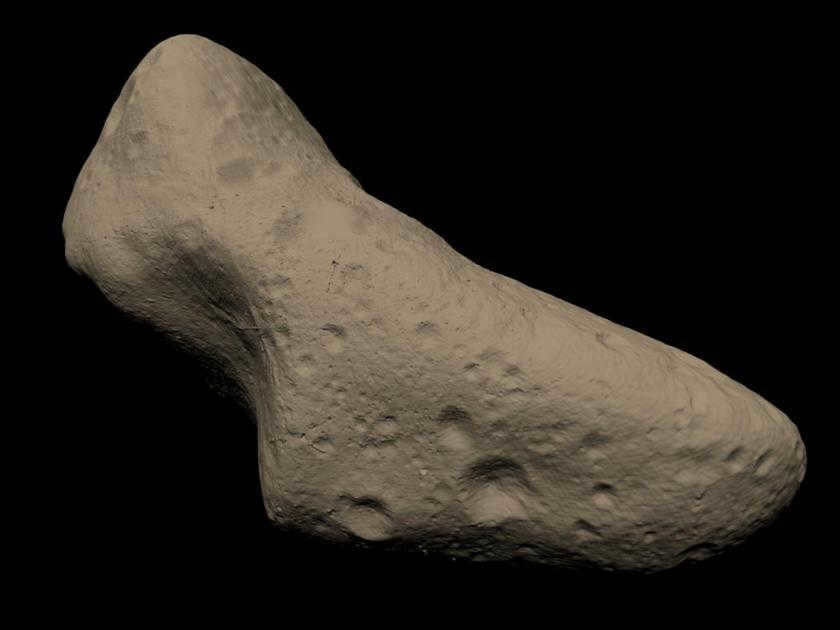
Near-Earth celestial bodies
Near-Earth or near-Earth celestial bodies are asteroids that have an orbital perihelion distance of no more than 1.3 astronomical units. Various space missions have been launched to explore a number of these objects.
- Eros is a relatively large celestial body with approximate dimensions of 34×11×11 km and a mass of 6.7×1012 tons, belonging to the S class. This rocky asteroid was investigated in 2000 by the NEAR Shoemaker spacecraft. In addition to containing silicate rocks, it also contains about 3% metallic elements, primarily iron, magnesium, and aluminum, but also rare metals such as zinc, silver, gold, and platinum.
- Itokawa is categorized as a class S asteroid. This celestial body is relatively small, measuring 535×294×209 meters, and has a substantial mass of 3.5×107 tons. In 2010, dust originating from the surface of Itokawa was transported to Earth through the return capsule of Japan’s Hayabusa probe. The dust particles retrieved from Itokawa contain various minerals belonging to the olivine, pyroxene, and plagioclase groups. Notably, the soil of Itokawa exhibits a significant concentration of iron within its silicate composition, while the free form of this metal is relatively scarce. Scientists have determined that the matter of this asteroid has undergone both thermal and impact metamorphism.
- The Hayabusa-2 spacecraft is currently investigating Ryugu, a Class C asteroid. Scientists are particularly interested in studying Ryugu because its composition is believed to have remained virtually unchanged since the formation of the solar system. Samples from Ryugu are expected to be delivered for further analysis in late 2020.
- The OSIRIS-Rex mission is currently studying Bennu, another celestial object. Bennu, a special class B carbonaceous asteroid, is also considered a valuable source of information about the solar system’s history. Scientists anticipate that soil samples from Bennu will be returned to Earth for in-depth examination in 2023.
Composition of the asteroid belt
The region located between the orbits of Mars and Jupiter, known as the Main Belt, is home to a wide variety of objects with different compositions, origins, and sizes. This area is primarily composed of asteroids, but it also contains cometary bodies and one dwarf planet, Ceres (which was previously classified as an asteroid).
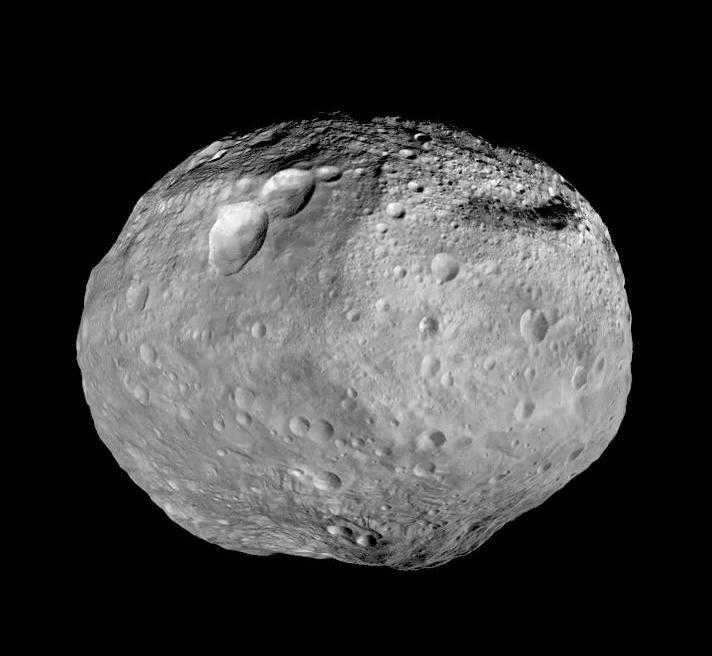
Until now, the Dawn mission has extensively examined one of the largest objects in the asteroid belt – Vesta. It is likely a protoplanet that has remained intact since the formation of the solar system. Vesta exhibits a complex structure, comprising of a core, mantle, and crust, and possesses a diverse mineral composition. It belongs to the unique V spectral class, which primarily consists of silicate asteroids enriched with magnesium-rich pyroxene. Further exploration of the composition of asteroid Vesta is facilitated by the analysis of meteorites originating from it.
Asteroids far from the Sun
A different extensive assortment of small objects can be found in the Kuiper belt, situated past the orbit of Neptune. It is significantly larger and more widespread compared to the Main Belt. The primary distinction between the two lies in the composition of the asteroids within the Kuiper Belt. They consist of a higher proportion of volatile components such as water ice, frozen nitrogen, methane, other gases, and organic matter. These objects resemble the protoplanetary cloud in terms of composition and share many properties with comets.
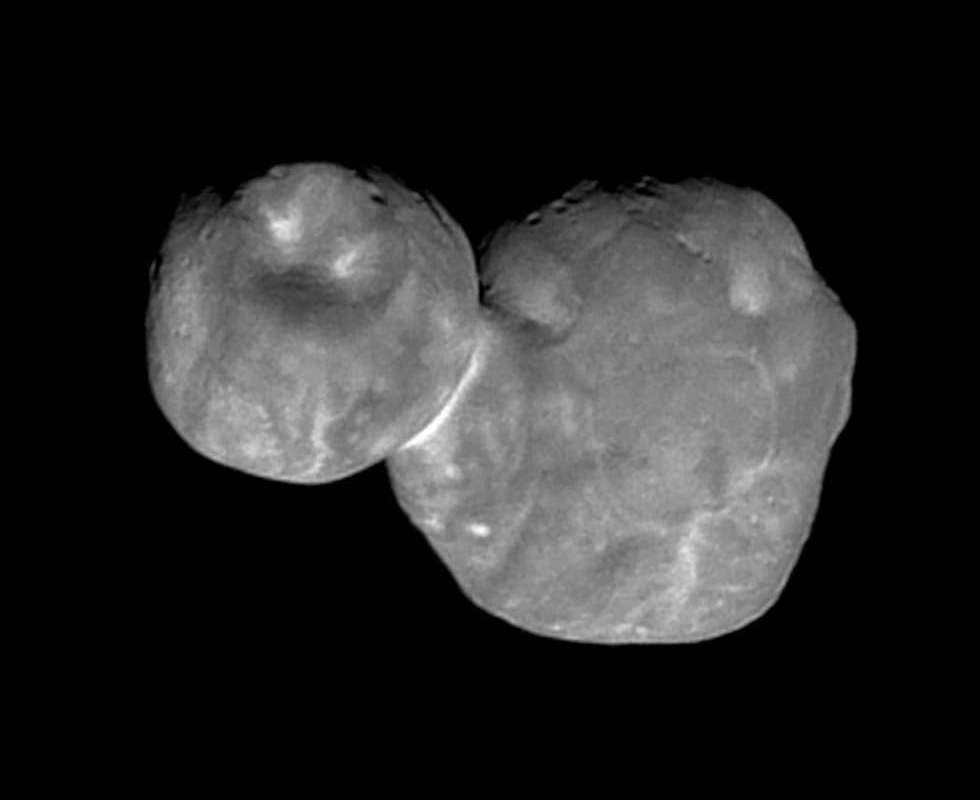
Centaurs, which follow unstable paths between the orbits of Jupiter and Neptune, hold an in-between position amidst Kuiper Belt entities and Main Belt asteroids. Their makeup is known to be transitory.
Exploring the Possibilities
Asteroids have always been of interest for their potential as a valuable source of rare metals, such as osmium, palladium, iridium, platinum, gold, as well as molybdenum, titanium, cobalt, and more. The argument for mining asteroids is based on the fact that the Earth’s crust lacks heavy elements due to gravitational differentiation. It is believed that M-asteroids, as a result of this same process, are abundant in the aforementioned metals, in addition to iron and nickel. Furthermore, C-asteroids, which have not undergone differentiation, have a fairly even distribution of elements.
